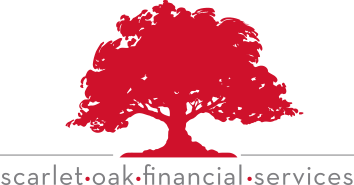Introduction
Cash value life insurance can be more than just a protection tool. It can also serve as a valuable financial resource when managed strategically. For policyholders with whole life, universal life, or variable life coverage, the accumulated cash value may offer a source of liquidity for building or supplementing a cash reserve. Whether you are looking to cover unexpected expenses, redirect funds toward other priorities, or reassess your long-term insurance needs, understanding how and when to access this cash value can help you make informed and tax-efficient decisions.
What is cash value life insurance?
Term life insurance does not have cash value but merely provides death benefit protection for a specified term. Other forms of life insurance, such as whole life, variable life, and universal life, include both an insurance and a cash accumulations component. This means that part of each premium payment is invested on the policyholder’s behalf and that the proceeds can be used in several ways: to accumulate as cash value, to buy more death benefit protection, or to reduce future premiums. Upon surrendering such a policy, or by taking withdrawals (if permitted) , the policyholder receives whatever cash value is available. The cash value of a life insurance policy may be a source of funds for your cash reserve.
Do you have cash value life insurance and, if so, how much?
Most people hold some form of life insurance, whether on themselves, their spouses, or their children. Many of these policies are the cash value type. Often they were purchased several years ago, meaning that they have been accumulating cash value for that period of time. Identify all cash value life policies on you and your dependents. Contact the agent or the policyholder service department of the insurance company to get updated statements on death benefit, cash value, loan value, and surrender value.
When is using cash value life insurance a good strategy for building a cash reserve?
When building cash value is not a desirable investing approach
The cash accumulation account of cash value life insurance can be a valuable investment tool. However, you may find that your need for cash value life insurance has changed and building cash value within the policy is not a desirable investment approach. For example, you may have purchased cash value life insurance on the life of your child but now find that you don’t need or want to maintain this policy. One option available to you is to surrender the policy and use the cash value to further fund your cash reserve.
When you need a quick source of cash
You may not want to cash in the policy, but you may need cash quickly from time to time. Life insurance cash values provide availability to cash through policy withdrawals, if permitted, or loans.
Heed these special considerations
Life insurance is a critical part of your financial plan, especially when you have dependents. Going without such coverage, even temporarily, can result in financial disaster for your survivors. Be sure to carefully plan all changes in insurance coverage and know their implications before making changes.
Know the tax implications of any change before you act
The cash value of a life insurance policy represents two categories of money. The first is the sum that was contributed as your premium payments, known as your basis. This is money on which income tax has already been paid. Any money you receive that is greater than your basis in the policy is taxable income. Because income tax may have to be paid on this income, the amount left over for building a cash reserve will be less than the full cash value amount.
Determine how long it will take to receive the money
Insurance companies may not move as quickly as you would like when it comes to cashing in your policy. It can take up to several months to complete the process. Make sure you get an estimate of how long you might have to wait, and factor this timing into your cash reserve plan.
Conclusion
Tapping into the cash value of a life insurance policy can provide financial flexibility, but it is not a decision to take lightly. The impact on your death benefit, potential surrender charges, and tax implications should all be carefully evaluated before making changes. By working with your insurance and financial professionals, you can determine whether partial withdrawals, policy loans, or a full surrender best align with your cash reserve goals while still protecting the financial security of your loved ones.
Scarlet Oak Financial Services can be reached at 800.871.1219 or contact us here. Click here to sign up for our newsletter with the latest economic news.
Source:
Broadridge Investor Communication Solutions, Inc. prepared this material for use by Scarlet Oak Financial Services.
Broadridge Investor Communication Solutions, Inc. does not provide investment, tax, legal, or retirement advice or recommendations. The information presented here is not specific to any individual’s personal circumstances. To the extent that this material concerns tax matters, it is not intended or written to be used, and cannot be used, by a taxpayer for the purpose of avoiding penalties that may be imposed by law. Each taxpayer should seek independent advice from a tax professional based on individual circumstances. Scarlet Oak Financial Services provide these materials for general information and educational purposes based upon publicly available information from sources believed to be reliable — we cannot assure the accuracy or completeness of these materials. The information in these materials may change at any time and without notice.



